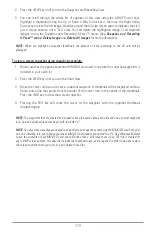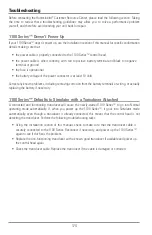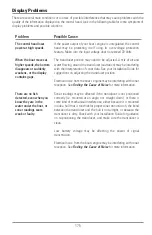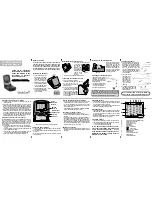
186
Glossary
GPS and Navigation Terms
Acquisition Time:
The length of time that a GPS receiver typically takes to determine a position from at least three
satellites. Humminbird® GPS receivers provide very fast acquisition times (under one minute), permitting users to get out
on the water faster.
Alarm, Arrival:
The audible alert that sounds when the boat is equal to or less than the alarm setting (25 feet – 3000
feet) from the location of the destination waypoint.
Alarm, Drift:
Drift Alarm is an audible alert that sounds when the boat is equal to or over the alarm setting (25 feet –
3000 feet) from the location where the alarm was turned on.
Alarm, Off-Course:
Off-Course Alarm is an audible alert that sounds when the boat’s distance from the intended Track,
(Cross Track Error), is equal to or over the alarm setting (25 feet – 3000 feet). See
Track
and
Cross Track Error
.
Altitude:
Altitude measures height above sea level. Altitude is a measurement that can be provided by GPS.
Bearing (BRG):
Bearing is the direction to a destination waypoint measured in degrees from North (i.e. 321°, where 000°
is North, 090° East, 180° is South, 270° is West).
Chartplotter:
Chartplotter describes a navigation device that shows Present Position on a Map, along with Tracks,
Waypoints, and Routes. All Chartplotters are also considered Trackplotters. All Humminbird® GPS Combo units are
Chartplotters. See
Trackplotter
.
Cold Start:
Cold Start refers to the procedure that a GPS receiver must perform when it does not have historical information
regarding its current location. This procedure typically lasts for several minutes, and may be experienced upon first power
up of the receiver, or if the receiver has been moved a great distance.
Course Over Ground (COG):
Course Over Ground is the current direction the boat is traveling measured in degrees from
North (i.e. 321°, where 000° is North, 090° East, 180° is South, 270° is West). When the Course Over Ground is equal to
Bearing, the boat is said to be “On Course” and will arrive at the destination in the most efficient manner. COG is often
confused with Heading. See
Heading
.
Cross Track Error (XTE):
Cross Track Error is the straight-line distance of the boat from the intended Track. XTE measures
how far the boat is off course, and also triggers the Off Course Alarm. See
Track
.
Differential GPS (DGPS):
Differential GPS is a system to improve the position accuracy of the Department of Defense GPS
through the use of secondary “correction signals” broadcast from ground stations around the coastal United States and
on some inland waterways. These correction signals are provided by the USCG and received by an auxiliary Differential
Beacon Receiver (DBR) that connects to the GPS receiver. The advent of WAAS has largely negated the need for the added
expense of a DBR in the United States.
Distance To Go:
Distance To Go is the straight-line distance between Present Position and the Destination Waypoint.
DTG and SOG (Speed Over Ground) are used to calculate Time To Go. See
Time to Go
and
Speed Over Ground
.
Estimated Position Error (EPE):
Estimated Position Error is a calculation that indicates the potential position inaccuracy
the user may experience due to a variety of GPS factors which include satellite position in the sky, signal strength and
others factors.
Fix Type:
Fix Type indicates whether the GPS receiver is providing 2D fix or 3D fix. A 2D fix requires only three satellites
and provides only latitude and longitude. A 3D fix requires four or more satellites, and provides latitude, longitude and
altitude.
GPS:
GPS is an acronym for Global Positioning System. GPS provides accurate position (latitude, longitude, altitude)
information virtually anywhere on the earth through satellite technology and personal receivers on the ground. A series
of geosynchronous satellites broadcast a unique signal toward the earth once per second. A GPS receiver, such as that
included with many Humminbird® products, receives the signals from these satellites and is able to determine position
based on very slight differences in the time each signal is received and the receiver’s knowledge of the location of each
of the satellites.






















